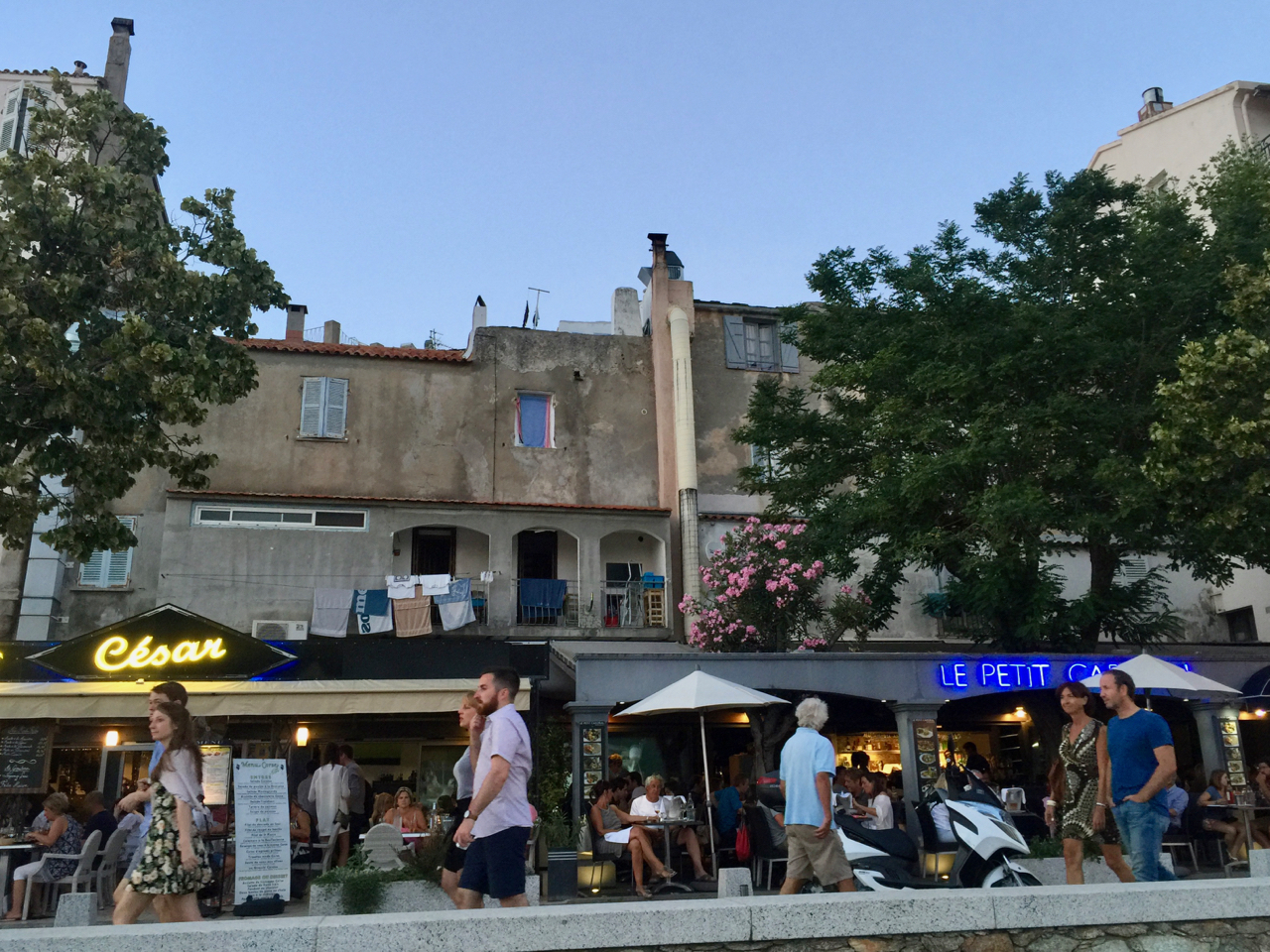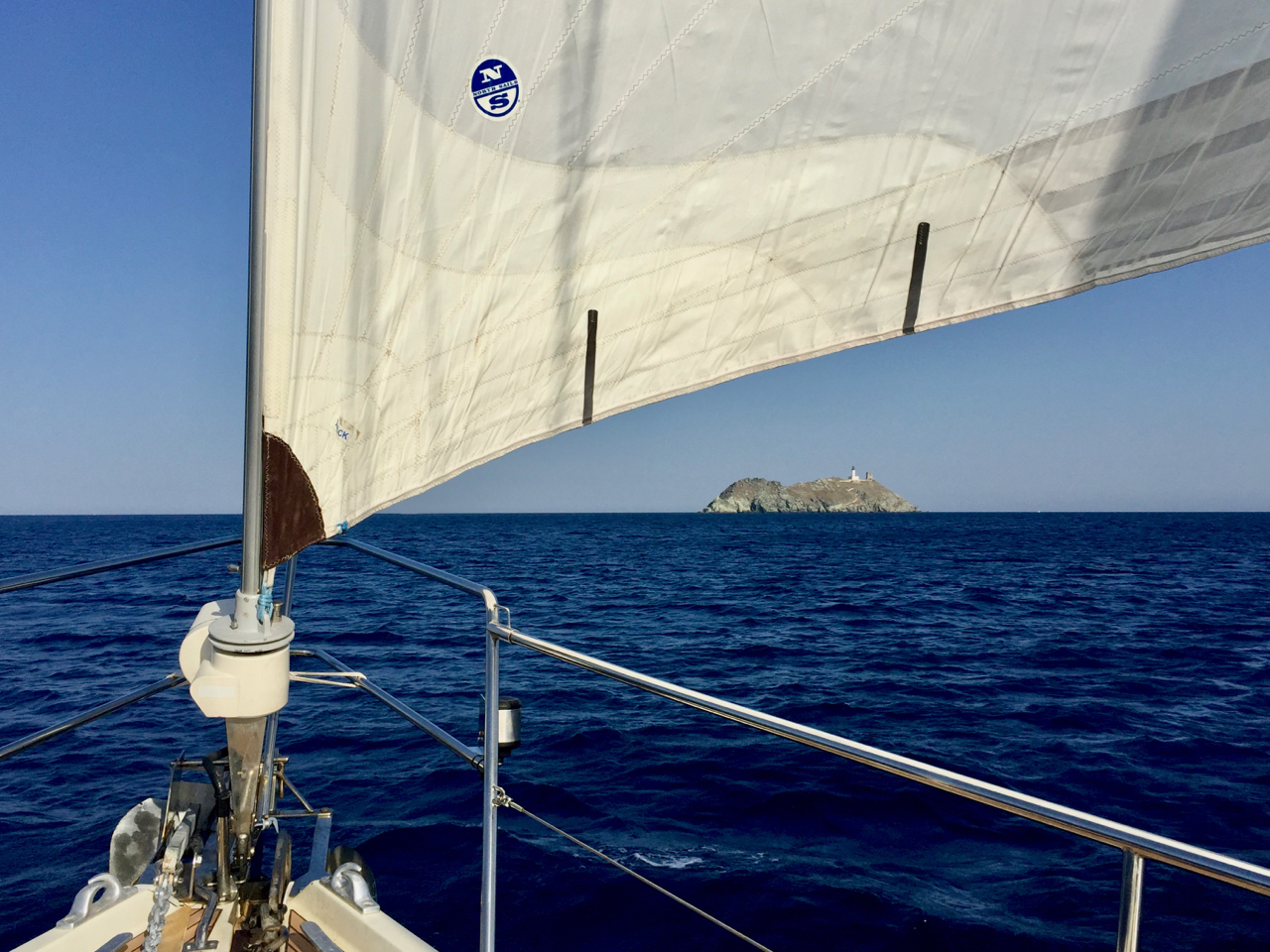In 1669, the Moslems conquered Crete from the Republic of Venice, and immediately focused their attention on the always rebellious Mani peninsula in nearby mainland Greece. 730 Greeks, largely from the town of Vitylo, petitioned the Republic of Genoa for asylum from the Turks, and in 1676 were granted lands in western Corsica, where they prospered, not without rivalry with the locals.
As members of the Greek Byzantine Catholic Church, many of their descendants follow a different rite from traditional catholics. Their churches and priests have an Orthodox appearance, and rites are in Greek, not Latin, and yet they are under the bishop of Rome.
And so Cargèse has two churches, facing each other: the Byzantine rite St. Spyridon (shown as a shadow on this photo) and, across the ravine, the Roman rite Santa Maria Assunta.
Peregrinus stood at anchor just off camera as the crew visited the rivalling Catholic churches of Cargèse. We also shared a drink with David, and his family, whom each year sail from the Gulf of St Tropez to Corsica, and were winding up their holiday. 7 August 2016.













